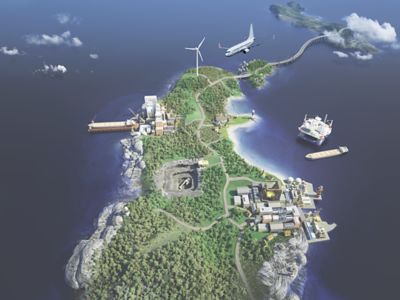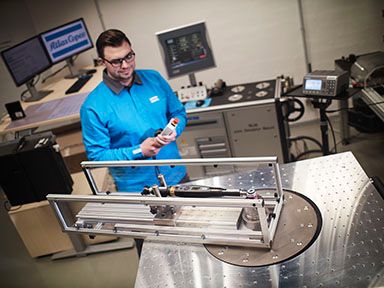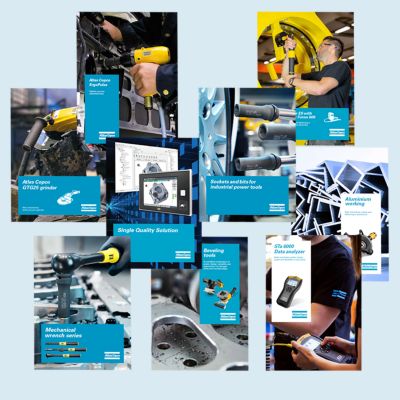The demand for reliable machinery in underwater environments has surged with the expansion of offshore energy, subsea exploration, and marine research. Engineers face a unique set of challenges when designing equipment for these settings, where saltwater, unpredictable conditions, and extreme pressure test the limits of traditional technologies. Among the solutions gaining traction is the use of air motors. Their inherent safety, simplicity, and robustness make them a compelling alternative to electric or hydraulic systems in underwater applications.
The Underwater Challenge
The underwater environment is unforgiving. Machines operating in these conditions must withstand corrosive seawater, limited accessibility for maintenance, and intense external pressures. Ensuring compliance with these conditions is crucial for the reliability and longevity of underwater machinery. Effective design must also prevent water ingress into the motor to maintain functionality. Additionally, securing a reliable energy supply remains a significant challenge.
Conventional electric motors often struggle with these factors due to their susceptibility to water ingress and complex sealing requirements. Hydraulic systems, while powerful, pose risks of fluid leaks that can harm marine life. This is where air motors present a viable solution—offering a robust and efficient technology that overcomes many of these challenges.
Key Benefits of Air Motors in Underwater Applications
Air motors convert compressed air into mechanical energy through a rotor or piston system. When submerged, their operation remains largely unchanged, provided they are properly sealed and pressurized. Compressed air, supplied from the surface or onboard tanks, powers the motor without relying on electricity or hydraulics, making air motors particularly adaptable to subsea environments.

Enhanced Safety
Safety is a top priority in offshore and underwater engineering. Regulatory bodies such as the American Petroleum Institute (API), Det Norske Veritas (DNV), ATEX, and IECEx establish stringent guidelines to ensure equipment can operate safely in extreme conditions. Air motors naturally align with many of these standards, as they eliminate risks associated with electrical equipment. By avoiding electrical sparks, they reduce the possibility of igniting explosive atmospheres—a critical concern in offshore installations where volatile hydrocarbons may be present.
Material Durability and Corrosion Resistance
Integrating air motors into underwater systems requires careful engineering. A key challenge is ensuring that the motor’s components can withstand the harsh subsea environment. The choice of materials is critical—high-grade stainless steel, titanium, and specially coated alloys are commonly used to resist corrosion while maintaining structural integrity under high pressure.
Sealing solutions are equally important. Effective sealing mechanisms, such as double lip seals or robust O-ring arrangements, prevent water ingress into sensitive components. Standards such as ISO 13628 provide guidance on pressure management and material selection, ensuring equipment can endure the demanding conditions found at sea.
Pressure Management and Structural Integrity
In deep-water applications, extreme external pressure can stress motor housings and internal components. Engineers often employ pressure compensation techniques or design reinforced housings to prevent deformation. By incorporating these design features, air motors maintain performance even under significant pressure differentials.
Seamless Integration with Control Systems
Modern offshore and underwater installations increasingly rely on remote monitoring and automation to optimize performance and safety. Air motors, with their predictable behavior and mechanical simplicity, integrate easily with these systems. Their straightforward control logic and minimal mechanical complexity facilitate seamless incorporation into larger engineering projects, meeting both operational and safety standards.

Atlas Copco’s Air Motors: Designed for Underwater Performance
Atlas Copco’s standard air motors possess features that make them well-suited for underwater applications. Constructed with a durable stainless steel body and motor cell, these motors offer longevity and reliability in harsh environments. The use of lubrication-free vanes and Viton seals minimizes lubrication agents and particle release, reducing water pollution—a key consideration in marine applications.
A Sustainable Choice
Air motors provide a sustainable alternative for underwater applications, surpassing electric and hydraulic motors in eco-friendliness. They run on compressed air, eliminating the risk of oil leaks or electrical failures that could harm marine ecosystems. With no hazardous fluids and minimal maintenance requirements, air motors offer long-lasting, efficient operation. Their simple yet durable design reduces resource consumption, making them a cleaner and more reliable choice for subsea tools and machinery.
Engineering Reliability in Extreme Conditions
In the challenging underwater environment, air motors offer significant advantages, addressing many of the limitations faced by conventional electric and hydraulic systems. Their non-electrical operation enhances safety by mitigating the risk of sparks and electrical failures, while their simpler design reduces maintenance needs and increases overall reliability. By selecting the right materials and implementing effective sealing and pressure management systems—aligned with established standards such as API, DNV, ATEX, IECEx, and ISO 13628—engineers can unlock the full potential of air motors in underwater applications.
For engineers navigating the complexities of subsea design, air motors represent more than just a technical solution—they are a testament to the adaptability of proven technology in overcoming new challenges.

“Atlas Copco, we have a dedicated R&D team for developing customized air motor solutions to drive your application success!”
Damien Feller Global Product Manager

Find more information about our air motors
- Atlas Copco Industrial Air Motors Light Catalogue 13 MB, PDF
- Stainless Steel Air Motors 8.4 MB, PDF




